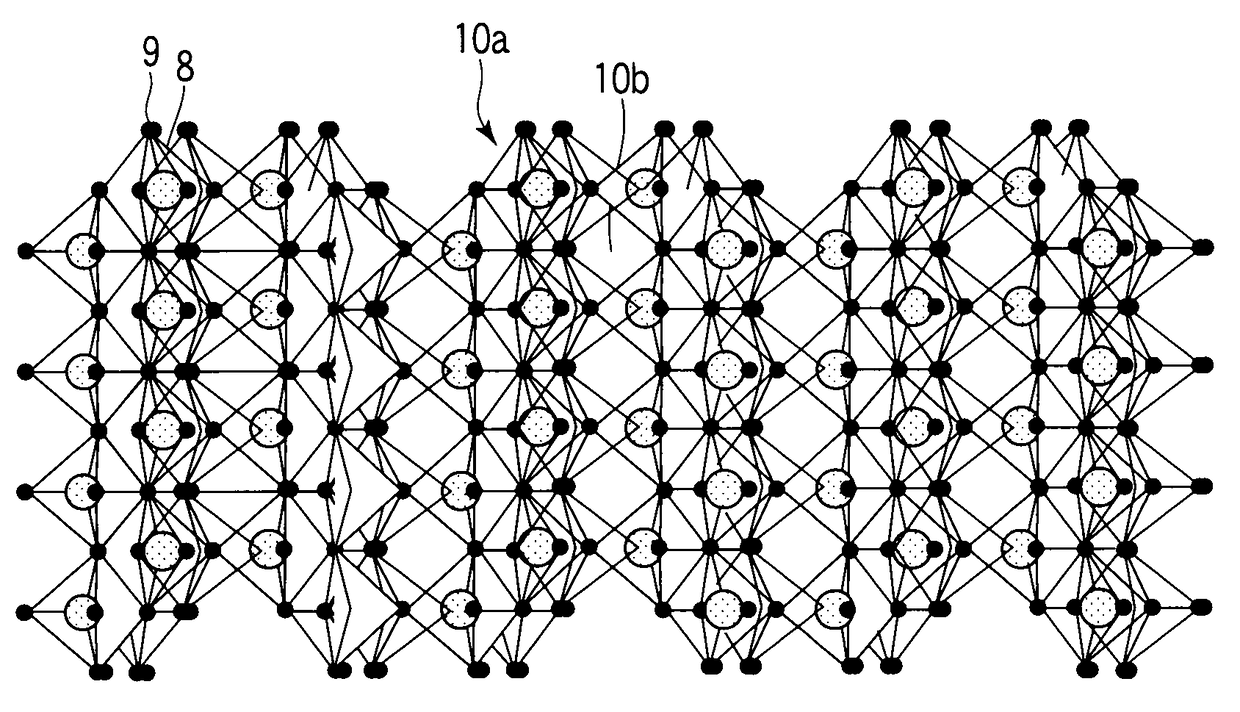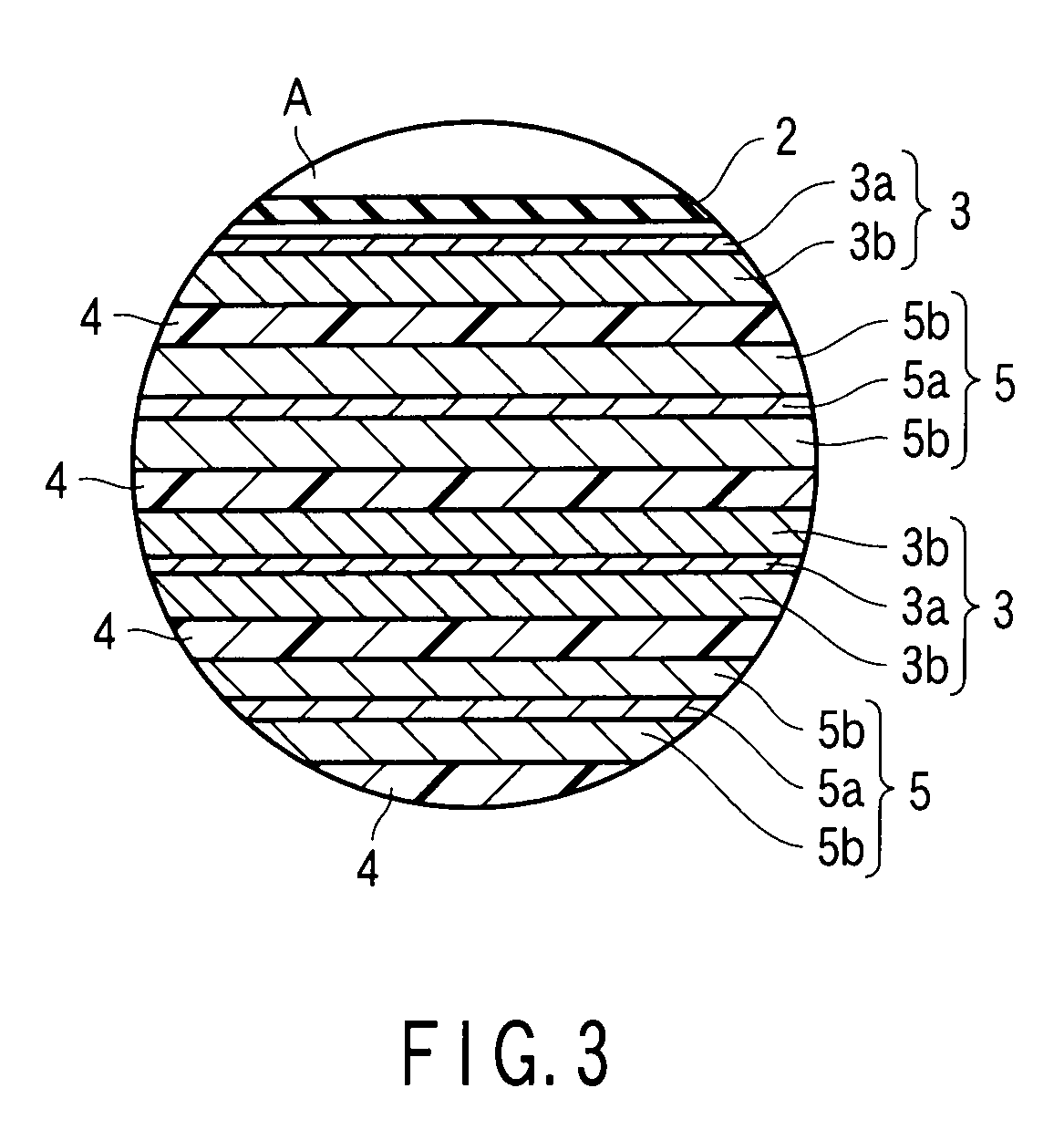Negative electrode active material containing a titanium oxide compound having a crystal structure of monoclinic system titanium dioxide
a monoclinic system, titanium dioxide technology, applied in the direction of alkaline earth titanates, natural mineral layered products, synthetic resin layered products, etc., can solve the problems of low capacity per unit weight of titanium oxide, substantial difficulty in improving energy density, and limited electrochemical properties
- Summary
- Abstract
- Description
- Claims
- Application Information
AI Technical Summary
Benefits of technology
Problems solved by technology
Method used
Image
Examples
first embodiment
(First Embodiment)
[0023]The negative electrode active material comprises a titanium oxide compound having a crystal structure of monoclinic titanium dioxide. The titanium oxide compound is characterized in that it is modified by at least one kind of ion selected from the group consisting of an alkali metal cation, alkali earth metal cation, transition metal cation, sulfide ion, sulfuric acid ion and chloride ion.
[0024]Here, the monoclinic titanium dioxide is referred to as “TiO2(B)”. Though the crystal structure of TiO2(B) will change because a distortion arises depending on the quantity and kind of intercalation, it belongs primarily to the space group C2 / m and has a tunnel structure as shown in FIG. 1. The detailed crystal structure of TiO2(B) are those described in R. Marchand, L. Brohan, M. Tournoux, Material Research Bulletin 15, 1129 (1980).
[0025]FIG. 1 is a schematic diagram of the crystal structure of TiO2(B). A titanium ion 8 and an oxide ion 9 form a skeleton structure par...
second embodiment
(Second Embodiment)
[0050]A method for manufacturing the titanium oxide compound comprised in the negative electrode active material according to the first embodiment will be explained in detail below.
[0051]The production method according to this embodiment includes a step of reacting an alkali titanate compound with an acid to exchange an alkali cation for a proton, thereby obtaining a proton-exchanged sample, a step of heating the proton-exchanged sample to produce a titanium oxide compound having a crystal structure of monoclinic titanium dioxide and a step of modifying the above titanium oxide compound by using a compound comprising at least one kind of ion selected from the group consisting of an alkali metal cation, alkali earth metal cation, transition metal cation, sulfide ion, sulfuric acid ion and chloride ion.
[0052]As the alkali titanate compound, without limitation, a compound such as Na2Ti3O7, K2Ti4O9 and Cs2Ti5O12 may be used. These alkali titanate compounds can be obta...
third embodiment
(Third Embodiment)
[0064]A nonaqueous electrolyte battery according to a includes a positive electrode, a negative electrode comprising a negative electrode active material according to the first embodiment, a nonaqueous electrolyte, a separator and a container.
[0065]The positive electrode, negative electrode, nonaqueous electrolyte, separator and container will be explained in detail below.
[0066]1) Positive Electrode
[0067]The positive electrode comprises a current collector and a positive electrode layer (namely, positive electrode active material-containing layer). The positive electrode layer comprises an active material and a binder. The positive electrode layer is formed on one or both surfaces of the current collector.
[0068]As the active material, for example, an oxide, sulfide or polymer may be used. Examples of the active material include manganese dioxide (MnO2) which lithium can be inserted to, iron oxide, copper oxide, nickel oxide, lithium-manganese composite oxide (for e...
PUM
| Property | Measurement | Unit |
|---|---|---|
| length | aaaaa | aaaaa |
| length | aaaaa | aaaaa |
| aspect ratio | aaaaa | aaaaa |
Abstract
Description
Claims
Application Information
 Login to View More
Login to View More - R&D
- Intellectual Property
- Life Sciences
- Materials
- Tech Scout
- Unparalleled Data Quality
- Higher Quality Content
- 60% Fewer Hallucinations
Browse by: Latest US Patents, China's latest patents, Technical Efficacy Thesaurus, Application Domain, Technology Topic, Popular Technical Reports.
© 2025 PatSnap. All rights reserved.Legal|Privacy policy|Modern Slavery Act Transparency Statement|Sitemap|About US| Contact US: help@patsnap.com



